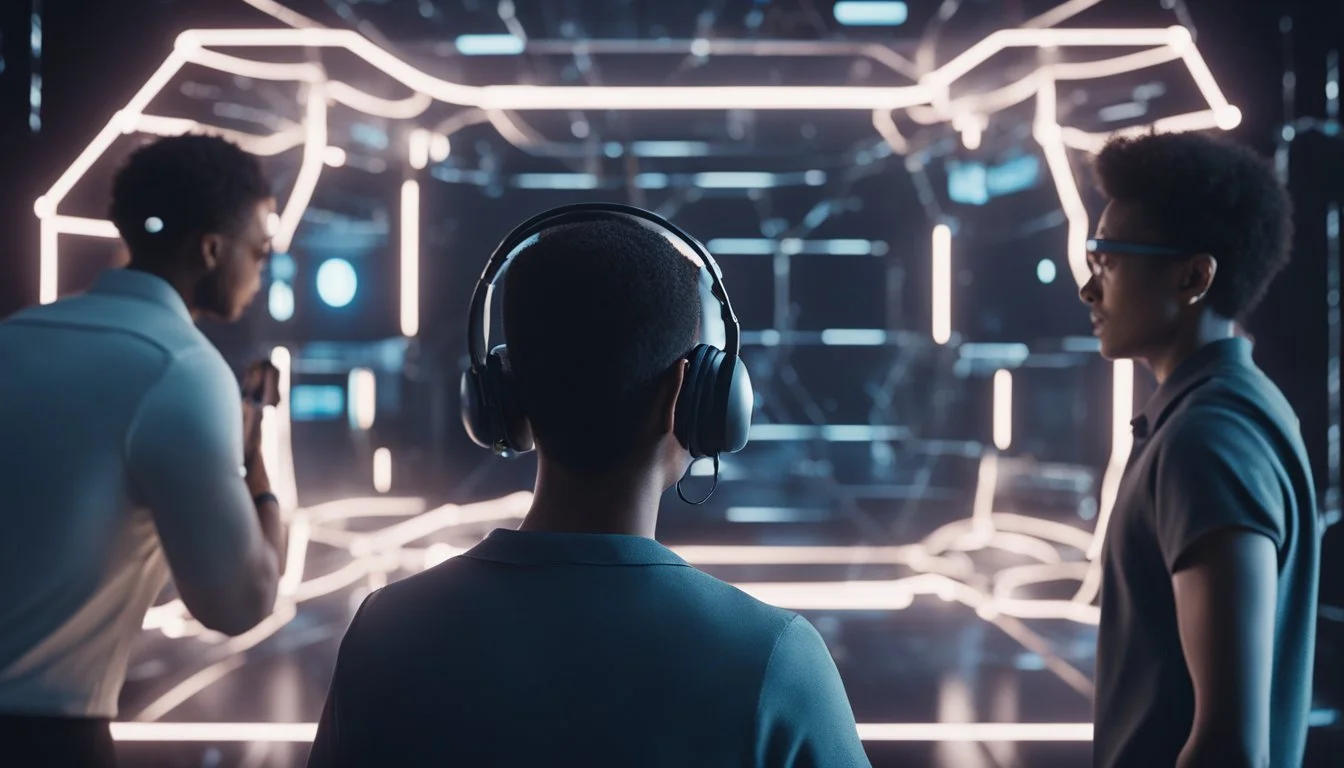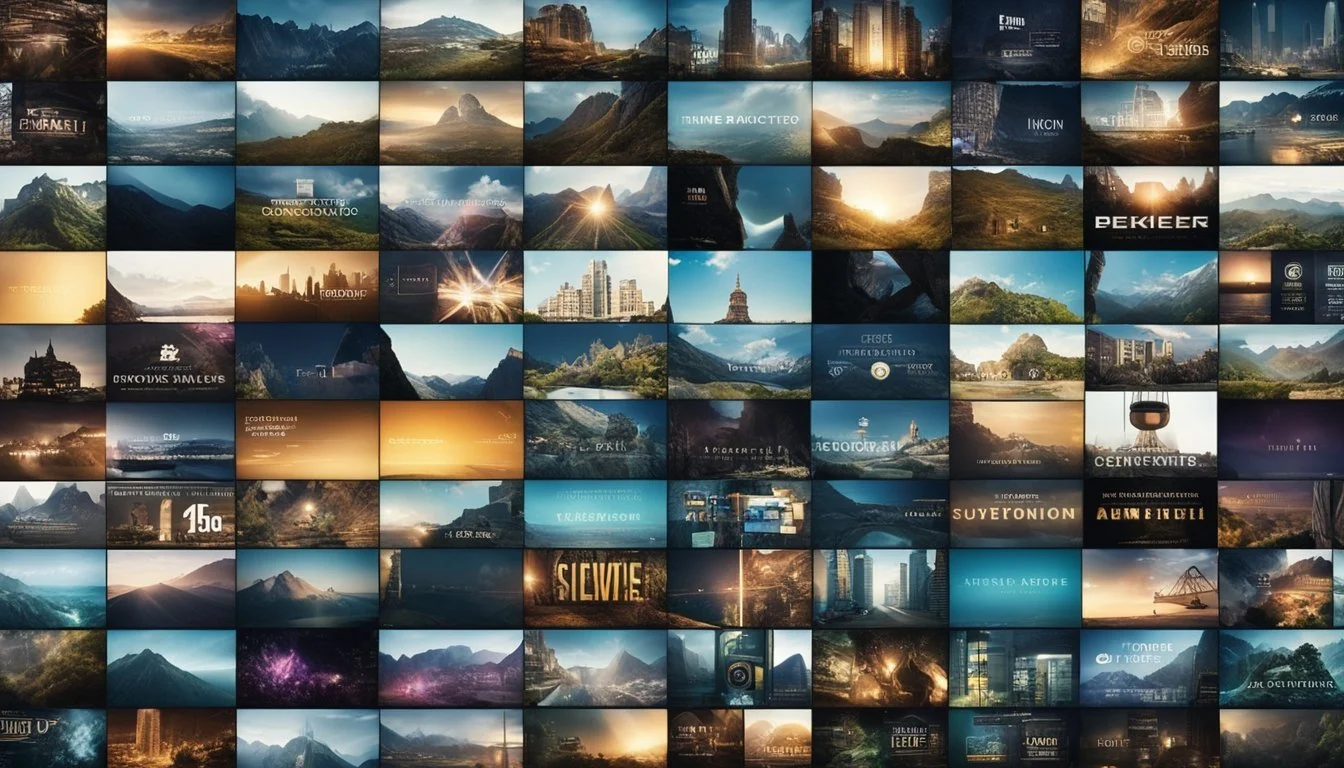Exploring the Boundaries of Interactive Filmmaking
Innovations and Challenges in Modern Cinema
Interactive filmmaking is transforming the way audiences engage with stories on screen. Unlike traditional films where viewers passively receive the narrative, interactive films involve a dynamic exchange that allows for real-time decision-making and engagement. This new approach heightens audience participation, making viewers feel like an integral part of the storytelling process.
The rise of technologies such as Virtual Reality (VR) and Augmented Reality (AR) further pushes the boundaries of what interactive filmmaking can achieve. VR immerses viewers in entirely virtual environments, while AR overlays digital elements onto the real world, enhancing on-set experiences. These advancements enable filmmakers to create complex, multi-faceted narratives that adapt and respond to audience input.
Workshops and initiatives, like the Korsakow Film Workshop, are pioneering non-linear and co-creative filmmaking approaches. This shift challenges traditional narrative structures and encourages new forms of self-reflection and audience interaction. By exploring the potentials of interactive media, creators are redefining what it means to watch and experience a film.
History of Interactive Filmmaking
Interactive filmmaking has come a long way since its inception. One of the earliest examples is the 1961 release, Mr. Sardonicus, directed by William Castle. Audience members were given the power to decide the protagonist's fate, making it a pioneering effort in cinematic interactivity.
In 1967, Kinoautomat further advanced the concept. This Czech film, often cited as the first fully interactive movie, allowed viewers to make decisions at pivotal points, effectively guiding the narrative.
Progress continued in the 1980s with the introduction of LaserDisc technology. This enabled more complex branching narratives in films and games. Notable examples include Dragon's Lair and Space Ace, which blended animated storytelling with interactive elements.
The 1990s saw interactive films being integrated with CD-ROMs and early PC games. Titles like Tender Loving Care leveraged multimedia capabilities to offer a more immersive experience, blending live-action footage with decision-making mechanics.
In the 21st century, the digital era brought new opportunities. Streaming platforms have enabled more accessible and sophisticated interactive content. 2018's Black Mirror: Bandersnatch on Netflix is a prominent example, allowing viewers to make choices that affect the storyline, demonstrating the potential of interactive media in mainstream entertainment.
Platforms such as Cinema8 have also contributed by offering tools that enable creators to produce interactive narratives, thereby redefining viewer engagement. The evolution of interactive films reflects technological advancements and changing audience preferences, showcasing a rich history of innovation and creativity in cinema.
Fundamentals of Interactive Filmmaking
The fundamentals of interactive filmmaking revolve around allowing the audience to influence the narrative and structure of the film. This approach focuses on creating a dynamic interaction between the viewer and the story.
Defining Interactivity in Film
Interactivity in film is the process by which viewers can actively shape the plot, characters, and outcomes. Unlike traditional films, where the narrative is static, interactive films use technology to enable multiple story paths.
Types of Interactivity:
Branching Narratives: Different choices lead to various plot outcomes.
Adaptive Storytelling: The film changes based on viewers' responses.
Viewer Participation: Direct audience involvement in decision-making.
Key Components of Interactive Narratives
Interactive narratives require several key components to function effectively. Script and Story Design: Multiple script versions cater to different viewer choices. Complex, non-linear plot structures are essential.
Technology: Software platforms manage viewer input and adapt the story accordingly. Examples include game engines and interactive streaming services.
User Interface (UI): A well-designed UI ensures seamless interaction. Clear options and feedback mechanisms enhance user experience.
Audience Engagement: Maintaining viewer interest is crucial. Engaging prompts and meaningful choices keep the audience invested in the narrative.
These elements together create an engaging and responsive film experience.
The Evolution of Audience Participation
The transition from passive viewership to interactive participation in documentaries and films has redefined the dynamics of audience engagement and storytelling.
From Spectators to Participants
In traditional filmmaking, audiences have long been passive spectators. The introduction of interactive documentaries and films transformed this dynamic by allowing viewers to actively participate in the narrative.
Technologies initially crafted for video games now enable audiences to choose different plotlines, influence outcomes, and even interact with characters. This shift empowers viewers, providing a more personalized and immersive experience.
Interactive platforms such as Cinema8 have pioneered this movement, pushing the boundaries of how stories are told and experienced. This participatory model not only enhances engagement but also deepens the emotional connection between the audience and the content.
Changing Viewer Expectations
With the rise of interactive content, viewer expectations have evolved significantly. Modern audiences now seek more than just a passive viewing experience; they crave an active role in the storytelling process.
Interactive storytelling taps into this demand, offering diverse pathways and choices that keep viewers engaged. The potential for audience interaction encourages repeat viewings and greater commitment to the content.
Innovators in the field continually explore new ways to meet these expectations, experimenting with various forms of media and technology. Festivals and platform developers are increasingly focusing on interactivity, signaling a fundamental shift in the future of filmmaking and audience engagement.
Technological Enablers
Interactive filmmaking has been propelled by advancements in technology, transformative software solutions, and immersive VR and AR experiences. These elements enhance the engagement and storytelling capabilities of modern cinema.
Advancements in Filmmaking Technology
Technological breakthroughs have revolutionized the ways films are created and experienced. High-resolution cameras and drones allow filmmakers to capture scenes with unprecedented clarity and dynamism.
Advanced CGI and motion capture technologies enable the creation of visually stunning and lifelike characters and environments.
Moreover, cloud computing has streamlined the post-production process, allowing for collaborative editing and faster rendering times. This synergy of technological tools has expanded the creative possibilities within interactive films.
Role of Software in Story Branching
Innovative software plays a crucial role in facilitating complex story branching in interactive films. Programs like Twine and Inklewriter provide intuitive platforms for writers to map out narrative choices and outcomes.
This software often includes features for scripting, which automates change responses as viewers make decisions.
Sophisticated algorithms manage the seamless integration of user input, ensuring the story progresses logically regardless of the choices made. This allows for intricate, multi-layered narratives that engage audiences on a deeper level.
Influence of Virtual Reality (VR) and Augmented Reality (AR)
VR and AR are on the cusp of transforming cinematic experiences. VR immerses viewers in a 360-degree environment, making them active participants in the story.
AR overlays digital elements onto the real world, blending reality with fiction in real-time.
These technologies offer unprecedented interactivity, allowing viewers to influence the storyline through physical movement and gestures. The implementation of these immersive tools in filmmaking is creating new dimensions of storytelling, forever changing how audiences experience films.
Interactive Film Genres
Interactive films are defining new storytelling techniques, instructional mediums, and blended forms of cinematic and gaming experiences. This section categorizes interactive films into narrative explorations, educational experiences, and gaming-influenced films.
Narrative Explorations
Interactive narrative films allow viewers to influence the storyline through choices made during the film. This genre prioritizes story and character development while incorporating audience participation. Films like Bandersnatch illustrate this by offering multiple endings based on user decisions.
Before We Disappear
Bandersnatch
Viewers become co-creators of the narrative, adding a personalized touch to their viewing experience. This genre is marked by its ability to create divergent plotlines that deliver unique experiences upon repeated viewings.
Educational Experiences
Interactive educational films engage audiences with content that requires active participation, which aids in learning and retention. These films often incorporate quizzes, decision points, and scenarios that test understanding. They provide a dynamic alternative to traditional educational videos by involving the audience more deeply.
Examples of such films include medical training simulations and corporate training programs. These films can be applied across various fields, including healthcare, business, and academia, making learning more engaging and memorable.
Gaming Influences on Film
The gamification of cinema merges film and game mechanics, creating an immersive experience. In this genre, films adopt elements common in video games, such as point systems, levels, and interactive environments. This hybrid format attracts audiences familiar with gaming, offering a blend of visual storytelling and interactivity.
The Book of the Dead
Cadavre Exquis
These films often use advanced technology, like real-time emotional recognition, to adjust the storyline based on viewer reactions. This adds a layer of personalization and engagement, merging cinematic tradition with innovative gaming elements.
Content Creation and Storytelling
Interactive filmmaking requires unique approaches to scriptwriting and directing. These techniques ensure the narrative is engaging and responsive to audience interactions.
Scriptwriting for Interactive Films
Scriptwriting in interactive filmmaking demands flexibility. Writers craft multiple branching storylines, ensuring that each possible path is compelling and coherent.
Character development is critical. Writers must create multidimensional characters with arcs that feel natural across various narrative possibilities.
Interactive scripts often require complex mapping of decision points. Each choice must impact the story in meaningful ways, preventing any sense of redundancy.
Directing Techniques for Dynamic Content
Directing for interactive films includes anticipating different viewer choices. Directors must guide actors to perform scenes that can adapt to diverse narrative outcomes.
Using innovative filming techniques is essential. Directors may utilize green screens and CGI to seamlessly transition between different story branches.
Audience engagement is a priority. Directors create immersive experiences by incorporating real-time feedback mechanisms, such as motion capture or eye-tracking technology.
User Experience Design
User experience design in interactive filmmaking involves creating intuitive and engaging interfaces that allow audiences to control and participate in the narrative. Ensuring immersion and fluid navigation enhances both storytelling and viewer satisfaction.
Creating Engaging Interactions
Designing interactions that captivate the audience is crucial. Filmmakers must balance user choices with seamless narrative flow. Effective techniques include:
Branching Storylines: Allowing users to make significant decisions that alter the plot.
Responsive Environments: Implementing settings that react to user inputs, enhancing immersion.
Intuitive Controls: Ensuring that navigation and choices are easily understood and accessible.
These elements collectively improve engagement, making the cinematic experience dynamic and personalized. Choices should be meaningful, impacting the story without overshadowing it. An optimal user experience means every interaction feels natural and integral to the narrative journey.
Case Studies in Interactive Filmmaking
Interactive filmmaking has pushed creative boundaries, merging elements of traditional cinema with interactive game mechanics. Examining key pioneering projects, commercial successes and failures, and critical reception helps illuminate the impact and evolution of this emerging genre.
Pioneering Projects
One of the most notable projects in interactive filmmaking is "Black Mirror: Bandersnatch." Released by Netflix in 2018, it allowed viewers to make decisions affecting the plot. This innovation challenged conventional storytelling and captivated audiences.
Another early example is the interactive documentary "Fort McMurray," set in Alberta’s oil boomtown. This narrative required viewers to participate in decision-making, blending factual reporting with gameplay. Both projects exemplified how interactive elements could deepen engagement and narrative complexity.
Commercial Successes and Failures
"Black Mirror: Bandersnatch" not only attracted significant viewership but also garnered substantial media attention for its unique approach. Its commercial success demonstrated the viability of interactive films in mainstream entertainment. The success of Bandersnatch led to further investment in interactive content on streaming platforms.
In contrast, some projects failed to resonate with audiences. "Late Shift," a full-motion video game blending film and interactive elements, received mixed reviews and modest commercial performance. While innovative, it highlighted the challenges of balancing narrative depth with interactivity.
Critical Reception and Audience Feedback
Critical reception of interactive films has been mixed. "Black Mirror: Bandersnatch" received praise for its creativity but also faced criticism for its sometimes fragmented narrative. Critics acknowledged the potential for this format but noted that seamless integration of choices remained a challenge.
Audience feedback often highlights the novelty and engagement of interactive experiences. Positive responses often emphasize the active role viewers play in the story. Negative feedback typically centers on limited choices or unsatisfying endings, reflecting the delicate balance required to satisfy an interactive audience.
Future of Interactive Filmmaking
Interactive filmmaking is pushing the boundaries of traditional cinema, integrating cutting-edge technologies and innovative storytelling techniques.
Emerging Trends
The integration of Virtual Reality (VR) and Augmented Reality (AR) has emerged as a groundbreaking trend. Filmmakers are using VR to create fully immersive worlds where viewers can engage directly with the narrative. AR, on the other hand, overlays digital information onto the real world, allowing for interactive storytelling experiences that blend fiction and reality.
Another significant trend is the use of artificial intelligence (AI) to customize viewing experiences. AI can analyze viewer preferences and emotions in real-time, leading to personalized story arcs and dynamic content. Platforms like Netflix are incorporating these technologies to develop more interactive content, revolutionizing audience engagement.
Predictions and Industry Forecasts
Industry experts predict that interactive films will become increasingly mainstream. As technology advances, real-time audience feedback will shape the unfolding narrative, making each viewing experience unique. This will require significant advancements in AI and machine learning to process viewer inputs seamlessly.
Collaborative filmmaking is also expected to rise. Projects like the #IFM2023 conference highlight the growing emphasis on collaboration across global creative communities. Filmmakers from various disciplines are coming together to explore new forms of interactive media, fostering innovation and creativity.
Investments in interactive storytelling platforms are forecasted to increase. Studios and streaming services are likely to allocate more resources towards developing interactive projects, aiming to captivate a tech-savvy audience. This shift presents both opportunities and challenges, especially in maintaining narrative coherence without disrupting the immersive experience.
Legal and Ethical Considerations
Navigating legal and ethical aspects is crucial in interactive filmmaking. Compliance with copyright laws and thoughtful engagement with the moral consequences of viewer choices can significantly impact the project’s integrity and success.
Copyrights and Intellectual Property
Interactive filmmakers must secure copyrights to protect their work and avoid legal disputes. This includes obtaining rights for all original content, such as scripts, music, and visual assets.
It's essential to create contracts that clearly outline ownership and usage rights. Licensing agreements may also be necessary for parts not owned by the filmmaker.
Intellectual Property (IP) laws require adherence to prevent infringement. Misuse of third-party content without permission can lead to costly lawsuits. Ensuring originality and obtaining required licenses safeguard the project's legality and credibility.
Moral Implications of Viewer Choices
Interactive films put viewers in control, raising moral issues about their decisions' potential impacts. Filmmakers need to preemptively consider scenarios that may lead to ethically questionable outcomes.
Transparency about the possible consequences of choices is vital. This can be achieved through in-game dialogues or content warnings. Avoiding harm to viewers or subjects is a primary concern, aligned with ethical standards found in traditional documentary practices.
Ethical frameworks like Utilitarianism or Kantian ethics may guide these decisions. Filmmakers should anticipate and address ethical dilemmas arising from interactive elements to maintain viewer trust and project integrity.
Industry Perspectives and Interviews
Experts in the film industry are optimistic about the potential of interactive films. Netflix, for instance, continues to invest heavily in this format, driven by the success of projects like Black Mirror: Bandersnatch. This has paved the way for more ambitious interactive storytelling plans in the future.
Jacomo Corbo, a notable figure in interactive entertainment, believes the boundaries between video games and films are increasingly blurring. He anticipates that audiences will soon have unique opportunities to intervene directly in storylines, creating a hybrid form of entertainment that blends traditional film with interactive elements.
In the realm of virtual production, professionals highlight the integration of CGI environments in real-time. This method allows actors to interact directly with digitally created settings, enhancing their performance and reducing costs associated with elaborate physical sets. The ability to visualize complex scenes on set also streamlines the production process, making it more efficient and flexible.
Virtual and augmented reality are also shaping the filmmaking landscape. VR offers entirely immersive experiences, while AR enhances the real world with digital elements. These technologies provide real-time visualizations, aiding actors and directors in their creative processes and contributing to more dynamic storytelling.
Industry Statistics:
Technology Adoption Rate Interactive Films High Virtual Production Increasing VR in Filmmaking Moderate AR in Filmmaking Gradual Growth
These insights indicate a transformative period in filmmaking, driven by technological innovation and creative ambition. The industry's movement towards interactive and immersive experiences demonstrates a commitment to engaging audiences in novel and compelling ways.







